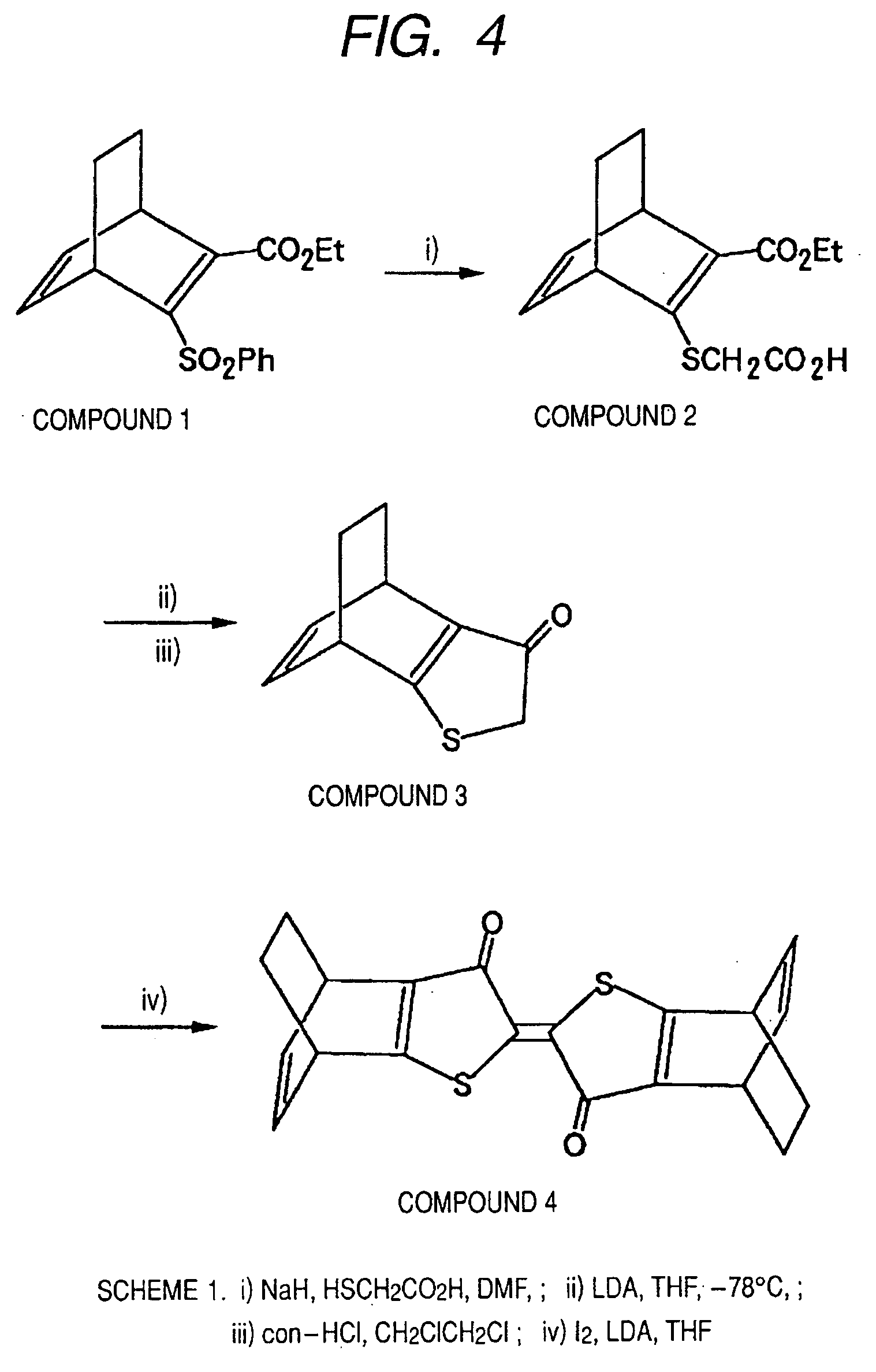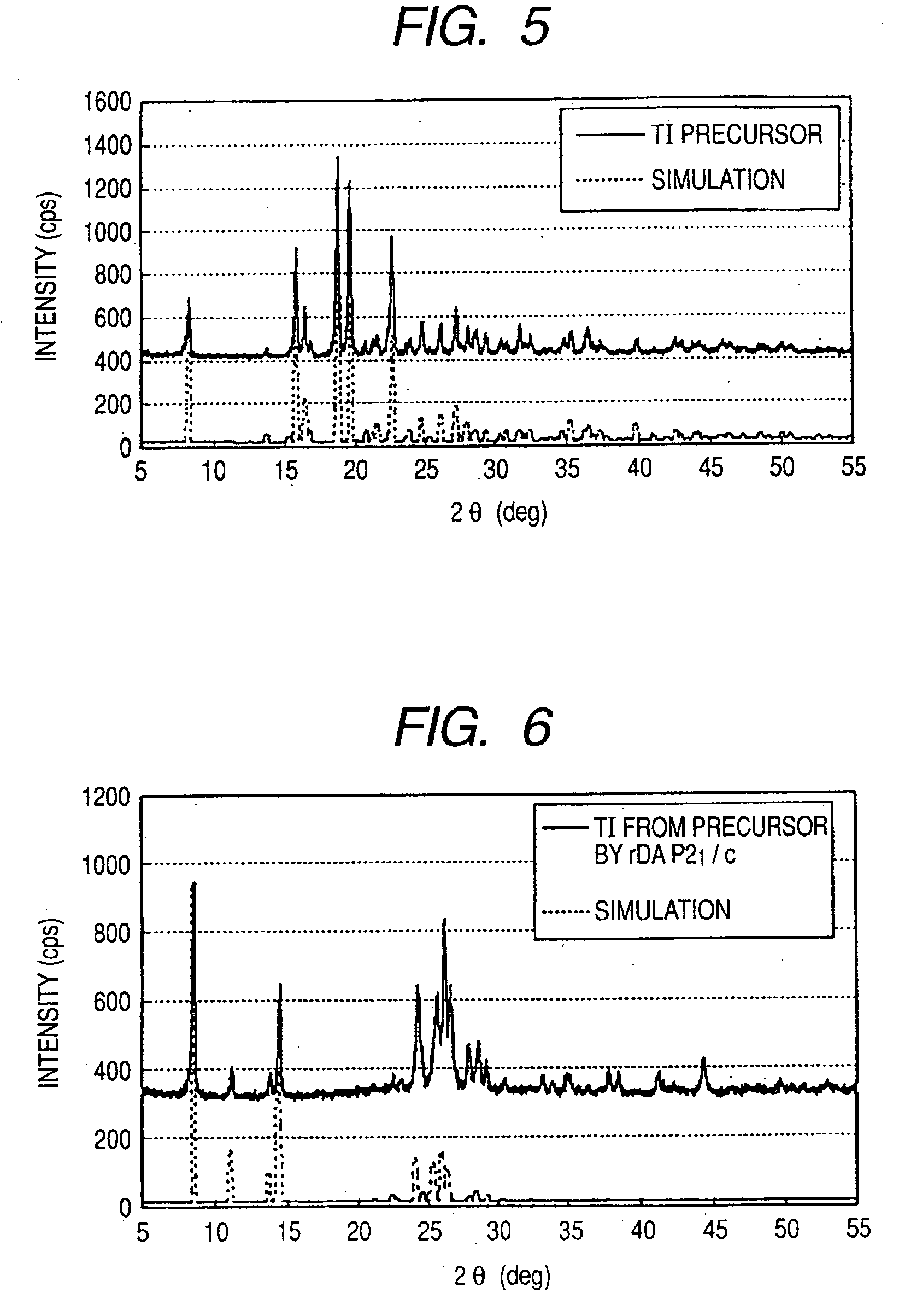Intermediate chemical substance in the production of pigment crystals, method for manufacturing pigment crystals using the same, and pigment crystal
a technology of pigment crystals and intermediate chemical substances, which is applied in the field of new methods for producing pigment crystals and pigment crystals, can solve the problems of insufficient light fastness and water resistance, increased solubility, and reduced color uniformity of resultant images, etc., and achieves high purity
- Summary
- Abstract
- Description
- Claims
- Application Information
AI Technical Summary
Benefits of technology
Problems solved by technology
Method used
Image
Examples
example 1
[0089] A thioindigo pigment precursor compound used in the implementation of the manufacturing method according to the present invention was synthesized according to the scheme described in FIG. 4. The abbreviations below are used in the following description.
[0090] THF: tetrahydrofuran
[0091] DMF: dimethylformamide
[0092] First, Compound 1 used for synthesis was synthesized according to Tetrahedron Letters, Vol. 22, No. 35, 1981, pp. 3347-3350. The compound represented by [2] was then synthesized as described below using Compound 1 represented by [1] in the formula below.
[0093] First, sodium hydride (NaH, 0.062 g, 2.60 mmol) was placed in a 50 ml eggplant-shaped flask, dry-DMF (2 ml) was added after nitrogen purge, and cooled in water bath. Separately, the compound represented by [1] (0.200 g, 0.62 mmol) described above was placed in a 25 ml pear-shaped flask, dry-DMF was added after nitrogen purge, thioglycollic acid (0.090 ml, 1.30 mmol) was added, and the mixture was dripped ...
example 2
[0106] A quinacridone pigment precursor compound used in an embodiment of the manufacturing method according to the present invention was synthesized according to the scheme described in FIG. 9.
[0107] First, Compound 1 used for synthesis was synthesized according to J. Org. Chem., Vol. 61, No. 11, 1996, pp. 3794-3798. The compound represented by [2] was then synthesized as described below using Compound 1 represented by [1] in the formula below.
[0108] First, Compound 1 [1] (0.318 g, 2.60 mmol) was placed in a 50 ml eggplant-shaped flask and, after nitrogen purge, dry-CH2Cl2 (2 ml) was added and cooled. Separately, ethyl chloroformate (0.284 g, 2.62 mmol) was placed in a 25 ml pear-shaped flask, dry-CH2Cl2 was added after nitrogen purge, and the mixture was dripped gradually into the above 50 ml eggplant-shaped flask with a transfer tube, followed by stirring for one hour. After confirming the completion of reaction by TLC (thin layer chromatography), the reaction was stopped and ...
example 3
3) from a Second Displacement Structure (S2) According to Example 1>
[0115] The second displacement structure (S2) of Example 1 was produced under the pigment crystalslization conditions for the pigment crystals (S3), the resultant thioindigo pigment crystals was dispersed using a styrene-acrylic acid copolymer dispersant, and an ink of 3.5% pigment content was prepared using the dispersion and a solvent containing water, glycerol and ethylene glycol. Color development test of the ink was performed.
(Color Development)
[0116] The ink prepared above was filled into an ink cartridge for PIXUS950i manufactured by Canon Inc., and an image was formed using PIXUS950i, an ink-jet image forming apparatus. The media used was PR-101 manufactured by Canon Inc. Visual observation of the image formed for color brightness revealed that a desired pigment crystals state representing pigment crystals (S3) of uniform composition free of unwanted matter was produced, resulting in an image having super...
PUM
 Login to View More
Login to View More Abstract
Description
Claims
Application Information
 Login to View More
Login to View More - R&D
- Intellectual Property
- Life Sciences
- Materials
- Tech Scout
- Unparalleled Data Quality
- Higher Quality Content
- 60% Fewer Hallucinations
Browse by: Latest US Patents, China's latest patents, Technical Efficacy Thesaurus, Application Domain, Technology Topic, Popular Technical Reports.
© 2025 PatSnap. All rights reserved.Legal|Privacy policy|Modern Slavery Act Transparency Statement|Sitemap|About US| Contact US: help@patsnap.com



